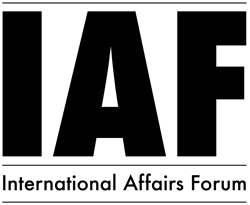| Fri. July 18, 2025 |
 |
|
||
|
||||
| ||||
 By David H. Shinn
By David H. Shinn
Africa and the western Indian Ocean have security implications for China only to the extent that Chinese nationals and investments in the region are threatened or there are interruptions in the flow from Africa of critical raw materials that support China’s economy. As a result, China puts a premium on strengthening the stability of African countries, irrespective of their political ideology, especially those that are major exporters of raw materials or have a significant Chinese presence.
China’s security-related interests in Africa began in the late 1950s with military assistance and training for a variety of African liberation groups fighting for independence from colonial rule. During the 1960s, China even supported a small number of African rebel groups that opposed independent African governments. This early policy was part of China’s doctrine of revolutionary warfare and support globally for wars of national liberation.
As African countries under colonial rule obtained independence and China ended in the 1970s its support for rebel groups opposing independent African governments, it refocused Chinese security strategy in Africa. China became an early although modest supplier of military equipment, especially small arms and light weapons, to African governments. From the 1960s to the 1990s, China’s share of conventional arms deliveries to Africa by dollar value varied between 3 and 5 percent of the global total. Since the late 1990s, as China produced higher quality and a wider selection of conventional military equipment, it increased its transfers to Sub-Saharan Africa to about 15 percent. These percentages exclude small arms and light weapons, which are difficult to track but for which China is a major supplier.
Small arms and light weapons do not contribute significantly to the dollar value of Chinese arms transfers, but those that have made their way into African conflicts such as Darfur, Somalia, Liberia, Chad and the eastern Congo have, together with weapons from other countries, contributed to the loss of life. It is China’s policy to transfer weapons only to governments and there is no evidence in recent years that China has provided them directly to rebel groups. In some cases, African governments have transferred them to rebel organizations or they are purchased on the international arms market. A UN Panel of Experts concluded, for example, that Sudan supplied the allied Janjaweed rebel organization with Chinese arms for use in Darfur even after a United Nations’ embargo had taken effect.
From the beginning, China’s military strategy has relied on a steady stream of exchange visits with African military counterparts. Members of the People’s Liberation Army (PLA) and Navy (PLAN) are constantly visiting African countries and African military leaders are frequent guests of the PLA and PLAN. This is a relatively low cost policy with a potentially high return. Some twenty-eight African countries have defense attachés assigned to their embassies in Beijing. China has some sixteen defense attaché offices in Africa accredited to about thirty countries, a surprisingly low number in view of China’s growing security interests.
UN peacekeeping operations in Africa have increasingly become a significant component of China’s policy. It deployed twenty military observers in 1989 to a UN election monitoring operation in Namibia, its first military deployment with the UN. This was followed by a steady increase of support for UN peacekeeping operations. China now has about 1,500 non-combatant troops and police assigned to six of the seven UN missions in Africa, more than any other permanent member of the Security Council. China sends primarily engineers, transport specialists and medical units. China sees this contribution as a way to increase its standing in the world, test its military ability, learn more about African security, and put it in a position to help protect Chinese interests in Africa. Support for UN peacekeeping is now central to China’s military strategy in Africa. By all accounts, including those from American military personnel, China’s peacekeepers have performed well. China has also increased its financial support for UN peacekeeping operations and made modest contributions to operations such as Somalia undertaken by the African Union and sub-regional African organizations.
China and Western countries have, however, a different understanding of the ultimate goal of UN peacekeeping operations. While both camps seek a return to political stability in conflict countries, Western governments emphasize an outcome that results in a liberal democratic government while China’s primary goal is economic development that includes poverty reduction, increased employment and infrastructure creation. The establishment of a liberal democratic regime is low on its priority list.
As China increased its engagement with and its physical presence in Africa, it has become subject to more security challenges. The Nigerian Movement for the Emancipation of the Niger Delta (MEND) warned China to stay out of the region. MEND or similar organizations kidnapped more than twenty Chinese working in the area. Chinese personnel have been kidnapped and killed in Sudan’s Southern Kordofan region by forces that oppose Sudan’s government. Nine Chinese oil workers died in an attack on their base in the Ogaden region of Ethiopia by the Ogaden National Liberation Front. China’s 2009 crackdown on the Muslim Uighurs in Xinjiang Uygur Autonomous Region of western China resulted in threats against Chinese workers, who number as many as 50,000, in Algeria by al-Qaeda in the Islamic Maghreb. The collapse of the regime in Libya required the evacuation of 35,000 Chinese workers from that country in 2011. These and other incidents have caused China to reassess the level of risk it is willing to take and its ability to protect its nationals in Africa.
The outbreak of Somali piracy in the Gulf of Aden and subsequently throughout the western Indian Ocean has impacted Chinese-owned vessels and crews. In its first ever out of region tactical deployment, the PLAN sent at the end of 2008 two frigates and a supply ship to the Gulf of Aden to help the international anti-piracy effort. China continues to maintain this naval presence in the region. In addition to protecting Chinese shipping interests, the naval force is intended to help ensure the safe transit of oil and minerals on other nations’ flagged vessels from Africa and the Middle East to Chinese ports. This naval presence has resulted in more frequent PLAN visits to African and Indian Ocean ports and raised the question whether China may seek more permanent naval supply arrangements in the region.
There is significant evidence that China is working to develop a carrier force. Its first carrier began sea trials in 2011 but will not be operational until 2013. In 2008, fifty students began training as naval pilots capable of operating fixed-wing aircraft from an aircraft carrier. The U.S. Department of Defense believes the PLAN is considering building multiple carriers by 2020. While the western Indian Ocean will not be the highest operational priority for a Chinese carrier task force, it will certainly be a strong candidate. Both the U.S. and Indian navies are following this issue closely. A captain in the Indian Navy wrote in 2010 that deployment of PLAN ships in the Gulf of Aden is a manifestation of the Chinese desire to shed its image as a “brown water” navy and signal to the world its aspiration to become a blue water navy. Some Indian analysts worry that China’s goal is the “strategic encirclement” of India.
China’s 2010 white paper on national defense states that it “will never seek hegemony, nor will it adopt the approach of military expansion now or in the future, no matter how its economy develops.” China has no bases in Africa and insists that it has no intention to establish any, and it has not entered into any formal military alliance with an African or western Indian Ocean country. On the other hand, it is in discussion with Kenya on building a major port facility north of Mombasa, has interests in two container facilities in Port Said, Egypt, and is considering the Seychelles as a resupply port for PLAN vessels taking part in the anti-piracy operation. Several senior retired PLAN officers have recently commented publicly on the need to obtain a permanent resupply base in the region to support Chinese ships.
China has been careful so far to limit its military presence in Africa and the western Indian Ocean, but the fact that it is today the world’s second largest economy and will soon take over first place changes the equation. China certainly does not want to rely on the U.S. Navy to protect the sea lanes that transport so much of its imported oil and minerals from Africa and the Middle East. These concerns have already changed China’s security strategy and, moving forward, will almost certainly increase its interest in expanding its military reach and ties with countries in Africa and the western Indian Ocean.
David H. Shinn is Adjunct Professor at George Washington University and former Ambassador to Ethiopia and Burkina Faso
| Comments in Chronological order (0 total comments) | |
| Report Abuse |
| Contact Us | About Us | Donate | Terms & Conditions |
|
All Rights Reserved. Copyright 2002 - 2025